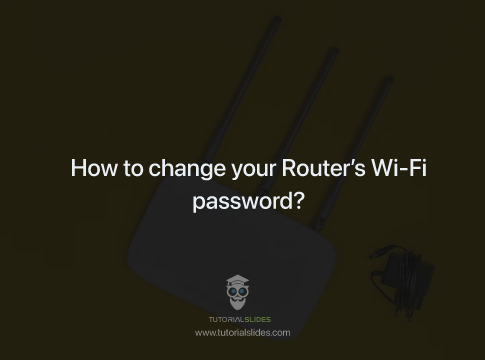1. Open your browser to the configuration page of your router:
You can access your router’s configuration page through your web browser on your computer connected to your network. If you can’t connect top the Wi-Fi because you don’t know the password, you can use an Ethernet cable to connect your computer directly to the router. This will bypass the need for the Wi-Fi password.
Typical router addresses are 192.168.1.1, 192.168.0.1, 192.168.2.1, or 10.0.1.1 for Apple. Enter this address into your browser’s address bar. If this doesn’t work then you can press and hold the Reset button on your router for about 30 seconds to reset it to factory default settings. Then you can look up the default address for your router model and enter it into your browser.
2. Enter your router’s username and password details:
Every router requires a username and password before you can access the interface. In many cases the default username is “admin” and the password is “admin” or “password”. Of course this varies from model to model, so you should check your model online to see your exact login information. Most D-Link routers have a default user name of admin and password of admin or blank.
If you’ve changed the login in the past and since forgot it, or received a second hand router and the previous owner didn’t reset it, you’ll need to press and hold the Reset button on the router for about 30 seconds. This will reset the settings to default, allowing you to log in with the default username and password. Beware – this will erase existing configuration data on the router.
3. Open the Wireless section:
Once you are logged into your router, you will need to find the Wireless section of the configuration page. The exact name varies from manufacturer to manufacturer, but generally you are looking for a “Wireless” or “Wireless Settings/Setup” tab or button.
4. Change the password:
Look for the box labelled “Password”, “Passphrase” or “Shared Key”. You can enter your new password into this box. Some routers will ask that you type the password again to make sure that you entered it correctly.
Try to create a strong password that would be difficult if not impossible to guess. It should not be related to anything personal, and should include a liberal amount of numbers, random cases, and special characters such as “!”, “$” and “#”. A strong password is usually at least 8 characters long.
5. Set your security type:
There are three main types of wireless encryption: WEP, WPA, and WPA2. For the most secure network, you should be using WPA2. You may run into issues connecting older devices, however, in which case you could switch to WPA or WPA/WPA2. Selecting WEP is NOT recommended, as WEP encryption is very easy to break.
6. Save your settings:
Once you have updated your new password, click the Apply or Save button. The router will then process the change, at which point any devices currently connected would be disconnected. After your settings are changed, you can connect to your wireless network using your new password.


